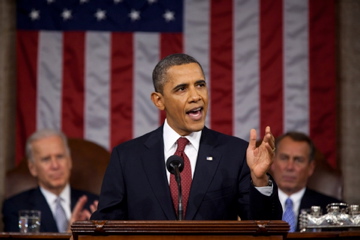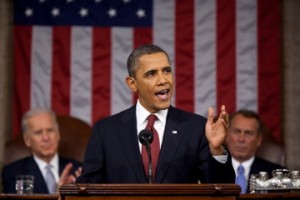By Ross Parker
ticklethewire.com
As Barack Obama prepares for his eighth and final year as President of the United States, it is an opportune time to review his administration’s performance in the area of the criminal justice system. Perhaps the most notable are the changes in his drug enforcement policies, especially in the area of sentencing, corrections, and treatment.
Many in law enforcement would criticize these changes. A minority has applauded them as necessary and even beneficial. Most of the public is simply oblivious to how substantial these changes have been. Reserving judgment, this column will provide a nutshell version to allow readers, and history, to decide.
Perhaps no President since Nixon declared a “war” on drugs in 1971 has done more to change the direction of drug treatment, enforcement, and punishment than Obama. At the beginning of his first term in 2009, he set this goal and, for better or worse, he has largely accomplished it, in contrast to the majority of his stated objectives in other subjects of policy. With the possible exception of terrorism, no other area has caused as deep a divide as his “reform” measures in drug enforcement. Proponents take the position that they were fiscally necessary to save an overcrowded prison system and to help restore equality and fairness. Opponents decry the measures as threatening the nation’s health and safety in the wake of an epidemic that is engulfing the nation.
Obama’s objective in reducing drug offender sentencing coincided with two factors which made it possible: a growing perception across a wide political perspective that the nation could not afford the steady increase in costs and infrastructure of an overcrowded penal system; and an increasingly vocal point of view that punishment was skewed to the detriment of minority offenders and that drug treatment was sorely lacking.
An unusual consensus among liberals, conservatives, libertarians and pragmatists has developed to support legislation which, for the first time in 40 years, reduced the drug offender penalty structure. And more legislation is pending with a good likelihood of passage in 2016.
Prior to President Obama’s agenda, from the seminal legislation in 1970, the formation of DEA in 1973, the steady increase in resources and agency priorities, the Sentencing Reform Act with higher sentencing guidelines, mandatory minimum penalties, asset forfeiture, and other measures, the policies on punishment for convicted drug offenders has largely gone in one direction. One result has been to increase the federal prison population from 25,000 in 1980 to about 220,000 today. Almost half are drug offenders. Bureau of Prisons officials estimate that the federal prisons are 30% overcrowded, and the GAO believes the number will reach 45% by 2018. The BOP budget has gone from $330 million to over $7 billion. Over 31 states have decreased imprisonment rates to deal with the effects of state prison overcrowding.
In 2010 Obama and a bipartisan Congress passed the Fair Sentencing Act, which re-set the cocaine powder/crack sentence punishment ratio from 100-to1 to 18-to-1. The result was a great reduction in mandatory minimums in future crack cases. At the urging of the Attorney General, the Sentencing Commission, with a majority of its members appointed by the President, followed suit by reducing the sentencing guidelines accordingly and making the rule change retroactive.
The Commission, again in response to the Attorney General’s testimony, went on in April 2014 to pass the “drug minus two” amendment which effectively reduced the offense level for most drug offenders by two levels and sentences by an average of two years. This resulted in the early release of 6,000 inmates in October 2015, with another 8,550 eligible to be released in November 2016. Several thousand others are in the process of seeking early release. This action will result in the largest prison releases in history.
President Obama is also setting records by his commutation policy with 171 in 2015 and tens of thousands pending review by the Justice Department, more than the combined number of the previous five Presidents combined. Most of those grants have involved convicted drug traffickers. In 2015 he spread his message of reform to an Oklahoma prison, the first sitting President to make such an appearance.
One of the by-products of the Affordable Care Act has been to provide treatment for tens of thousands of drug abusers. Formerly, few addicts were granted treatment from insurance companies and ended up in emergency rooms and hospitals after an overdose. The result has been a sea change in improvement for treatment opportunities. The Presidential National Drug Control Strategy estimates that, for every dollar spent on drug abuse treatment, $11 are saved in health care and criminal justice costs. Other program funding increases have gone to prison re-entry programs, drug courts, mental health treatment, and crisis intervention programs.
Two significant bills, part of Obama’s drug enforcement policy agenda, are pending in Congress. The Smarter Sentencing Act of 2015 would reduce mandatory minimums further, and the Sentencing Reform and Corrections Act of 2015 would reduce enhanced penalties for repeat drug offenders, eliminate three-strikes mandatory life sentences unless the prior convictions were for serious or violent drug violations, and provide early releases to prisoners who engage in programs involving education, work training, or drug rehabilitation. Both of these bills have broad bipartisan support in Congress.
The Department of Justice has instituted a plethora of other actions which have changed drug investigation and prosecution policies. The White House Drug Czar has called for an end to the “war” on drugs, and policy re-direction orders have been sent to the USAOs and to the enforcement agencies.
The latest of these changes, during December 2015, has been to shut down the Asset Forfeiture Equitable Sharing Program initiated in 1984. Under the program more than $7 billion has been provided to state and local police who participate in the seizure of assets from drug operations. DOJ cited budget cuts as the reason for the action. Law enforcement groups have criticized the action as shortsighted and an impediment to the effectiveness of cash-strapped police departments. Others have advocated the decision because of their opinion that the absence of the condition of arrests to the seizures encouraged decisions based on dollars rather than prosecutions.
Will history judge President Obama’s wholesale reform of the prosecution, sentencing, and treatment of drug offenders as a step in the right direction or as a dangerous experiment with the nation’s health and safety? Some ticklethewire.com columnist in 2040 should take up the subject.






